

|
Home Updates Hydros Cars Engines Contacts Links Contact On The Wire |
Home Page for Tethered Car Racing
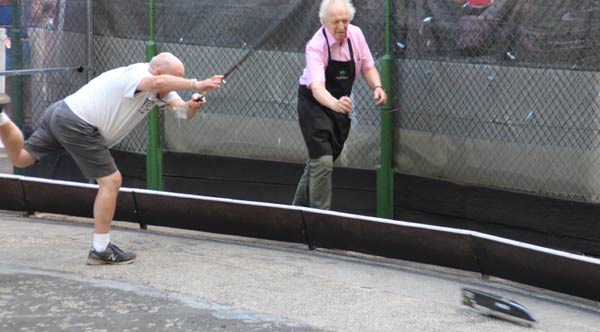
The racing of tethered cars began in
the late 1930s growing in popularity throughout the 40s and 50s in both
Eastern and Western Europe, the US and Australasia.
The concept of the sport is simple and has remained
unchanged since its inception. Initially the models resembled full sized
cars but over the years they have developed and become refined into
extremely fast, streamlined vehicles. The car is connected to a rotating
pylon via a steel cable of varying dimension depending on the class of car.
The cars are pushed off and horsed up to speed, a process that has remained
unchanged for seventy years. When the competitor is satisfied with the speed
of the car the timing begins for the number of laps that
equates to 500metres. At the end of the required laps the fuel is turned off by means of a
trip lever on the car, which must be completed within ten more laps. Caps, rags and mats sufficed at one time but now it
is a precisely adjusted mop. As with the hydroplanes it is the search for
ultimate speed that drives the competitors on.
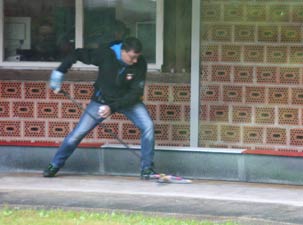 |
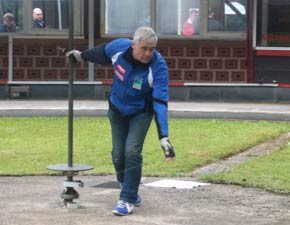 |
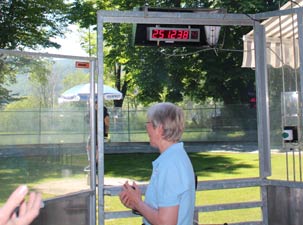 |
| Philipp Meier pushing off | Lembit Vaher horsing his own car | Speed for the run, national record |
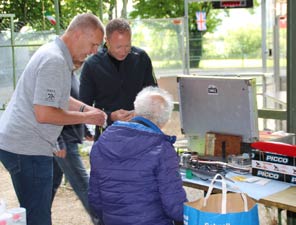 |
 |
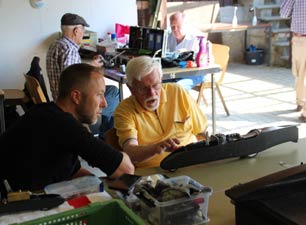 |
| Peter Michael and Otto in discussion | Serious pair of Class V cars | Jan Erik Falk giving advice |
British enthusiasts have two styles of racing that can be pursued, modern FEMA style cars or retro and vintage models. OTW has a series of articles detailing the histories of International and British tethered car racing and the organisations that have been responsible over the years.
Background and historical
articles
| Tethered Car Racing 1937 to the present | Brief History of the sport in the UK |
| A detailed history by David Giles | OTW article |
International Organisations
There are two bodies governing tethered car racing. FEMA (Federation Europeenne Du Modelisme Automobile) founded in 1952 and WMCR (World organisation for Model Car Racing) founded in 1978. Each organisation has its own rules that are broadly similar although there are now plans to unify these for international competition.
| FEMA Official website website for all current material on racing in Europe, updates, a sales page, regulations and a database of all tethered cars currently registered. |
Clubs, Associations and contacts within the UK
| British Tethered Car Racing Club | ||
| British Tethered Car Association | Retro Racing Club | Buckminster Tether Cars |
| National organisation from 1978 | Plans and publications | Track at BMFA National Centre |
Principle Events 2026
Up to date information with added and
amended dates will be available on the
speedmodelcar website.
| May 2nd 3rd | Kaposvar Hu | July 31st Aug 2nd | Tallin Est EC |
| May 16th 17th | Witterswill Tell GP Switzerland | August 22nd 23rd | Witterswill Switzerland |
| May 16th 17th | Pila PL | September 5th 6th | Hannover Germany |
| May 24th 25th | Pfingstrennen Kapfenhardt D | 12th 13th September | Pila PL |
| June 13th 14th | Orebro S | September 29th 2oth | Pecs Hungary |
| June 2oth 21st | Pecs Hungary | September 25th 27th | Styri Ukraine |
| June 27th 28th | Cekiske Lithuania | ||
| July 4th 5th | Hannover Germany | 14th 15th March | Brisbane Int Aus |
FEMA
International Classes
| Class | Engine capacity | Weight | Bridle Colour | Bridle Thickness | Cable |
| Class 1 | 0.01cc - 1.5cc | 1.050kg | White | 2-3.5mm | 0.9mm |
| Class 2 | 1.51cc - 2.5cc | 1.570kg | Green | 2-3.5mm | 1.2mm |
| Class 3 | 2.51cc - 3.5cc | 2.0kg | Yellow | 2.5-4.5mm | 1.4mm |
| Class 3b | 2.51cc - 3.5cc | 2.0kg | Yellow | 2.5-4.5mm | 1.4mm |
| Class 4 | 3.51cc - 5cc | 2.30kg | Red | 2.5-4.5mm | 1.6mm |
| Class 5 | 5.1cc - 10cc | 3.130kg | Black | 4-4.5mm | 2.1mm |
Current
Records
|
International |
British |
|||
| Class 1 | Jan-Erik Falk Sw | 268.697kph Dec 2006 | Lynn Blowers | 251.238kph June 2019 |
| Class 2 | Torbjorn Johannessen Nor | 285.711kph Aug 2016 | Oliver Monk | 262.711kph Aug 2018 |
| Class 3 | Andrii Yakymiv Ukr | 300.953kph Mar 2017 | Hugh Blowers | 276.405kph June 2022 |
| Class 3b | Mart Sepp Est | 273.562kph Aug 2015 | David Giles | 241.285kph June 2010 |
| Class 4 | Tonu Sepp Est | 317.124kph Apr 2014 | Hugh Blowers | 295.925kph May 2024 |
| Class 5 | Tonu Sepp Est | 348.432kph Mar 2025 | Oliver Monk | 322.465kph May 2012 |
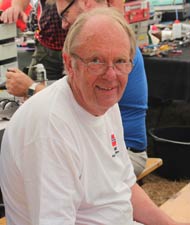 |
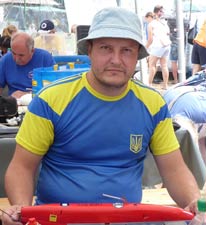 |
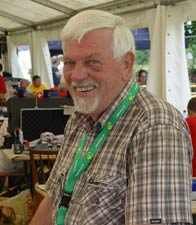 |
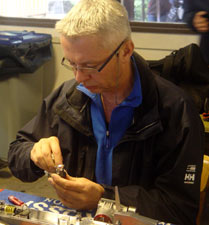 |
| Torbjorn Johannessen | Andrii Yakymiv | Jan-Erik Falk | Ando Rohtmets |
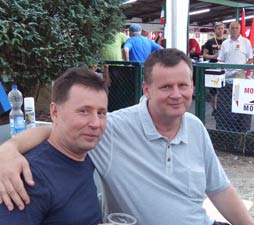 |
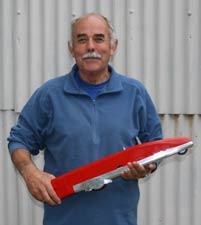 |
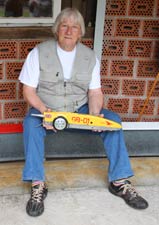 |
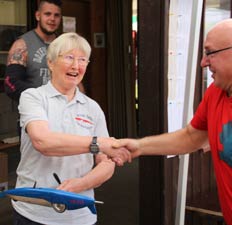 |
| Mart & Tonu Sepp | Oliver Monk | David Giles | Lynn Blowers |
Related information on building, running and maintaining tethered cars
|
Mark Osborne describes the building of a car from proprietary components |
David Giles Describes his E3 tethered car machined and built from scratch |
Oliver Monk
describes this essential |
|
Workshop Ramblings |
||
|
Oliver Monk describes projects, engineering techniques and car preparation |
2013
2014
2015
2016 2017
2018 2019 2020 2021 2022/3 2024 |
Printed material relating to tethered cars |
|
Buckminster Car Track Story behind the venture |
||
|
Event reports 2024 |
Buckminster | |
Routes to running a modern tethered car

Tethered car racing like almost every other speed based modelling discipline that seeks to achieve ultimate performance requires dedication, persistence, knowledge and expertise, relying on a hard core of interested members and competitors. To this end, Oliver Monk who competes in all classes except 1 or 3b regularly publishes his ‘Workshop Ramblings’ on OTW detailing the development of his current cars, the rebuilding of older models and several new builds, both for the FEMA classes and retro events. He also has an in depth knowledge of the close knit group of those who can supply everything from complete cars down to individual spares, a necessity for anyone wishing to compete.
The car is the essential piece of hardware, and for those interested there are a number of routes available to become the owner of a modern FEMA car and, hopefully, competing. The first step being to contact the national authority. For the UK this will be the BTCRC, which is the umbrella organisation.
From there on there is the option of purchasing a second hand car by visiting meetings or perusing the speedmodelcar site that often has complete cars for sale, including some exceedingly successful examples and even record breaking models.
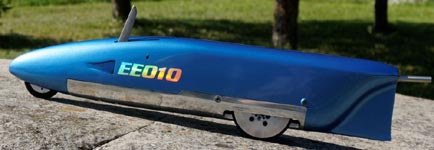 |
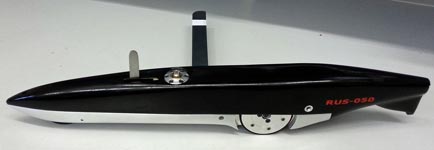 |
| Sepp 3.5cc car | Russian 1.5cc car |
|
Buying a new competition car (or commissioning one) is somewhat more difficult as the options here are more limited and making contact with a builder can require a bit of persistence and a good translator. Right: 3.5cc car supplied complete by Jozef Fonad |
|
There now exists the possibility to purchase the major components required and with a modicum of engineering, assemble a car yourself. Not as daunting though as building a car from scratch, which is another option for those with the facilities and expertise.
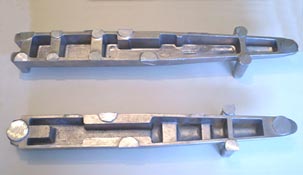 |
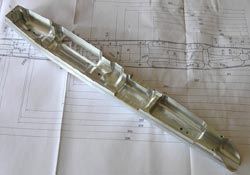 |
 |
| Cast pans from Gabor Dobrocsi | CNC pan from Linas Adomavicius | Kit of parts for Class V |
David Giles has been the most successful British competitor of the modern era being the only Briton since 1956 to become a European Champion. After a lengthy period of retirement from active competition, a trip to a meeting at the Basel track rekindled his interest and he took the decision to design, build and develop his own 3.5cc car (originally Class 5). The car proved to be a consistent front-runner in competitions and achieved 4th place in the 2005 European championships.
|
David continued with development of his cars introducing an entirely new concept in design, utilising an upper beam chassis milled from a solid bar of 7075 T6 aircraft alloy, the inspiration for which was a picture of an early rail racing car designed by Arthur Weaver. The principal reason for choosing this layout was to improve the airflow characteristics under the car. A
similar concept has been developed by Mart Sepp, but using a lower beam
chassis made from mild steel. |
|
David very kindly provided an account of the development of his car in the article DJR3 and the innovative Papagai.
Mark Osborne, an Australian we met in Basel in 2013 provided OTW with a very helpful and illuminating article that described in detail, with relevant costing, a project to build a number of new Class 5 10cc cars, starting with CNC machined pans.
For anyone interested in international competition, the latest edition of the rules (both FEMA and WMCR) are available on the website www.speedmodelcar.org
Potential drivers need to apply to the BTCRC for a national number that will be GB0**. Registration of a car is initiated by contacting the BTCRC for the submission of a ‘Daten Erfassungsblatt’ (specification data sheet) that is filled in and submitted to the FEMA Technical Secretary by the BTCRC Technical Secretary after he has inspected and scrutinised the car to ensure that it has satisfied the technical specification and design criteria for the relevant class. The car then receives a registration number, which has to be engraved on the bottom pan. All car and driver registrations will now be made online and a list of car registrations is available on the speedmodelcar.org website.
There is no subscription to either the BTCA or BTCRC, but there is an annual fee per active driver of 10 Euros and an annual national fee currently of 100 Euros, to be paid to the FEMA treasurer around the start of the racing season. The national fee is simply divided by the number of members, collected by the FEMA point of contact and passed directly to the FEMA secretary.
For further information: email: flatbadger(at)btinternet.com oliver.monk(at)btinternet.com h.blowers(at)btopenworld.com
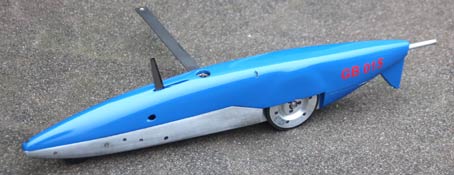 |
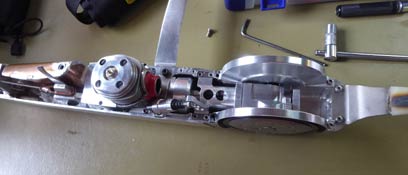 |
| Class 1: Lynn Blowers' 1.5cc British record holder | Class 3: Jan-Erik Falk's 2018 European Championship car |
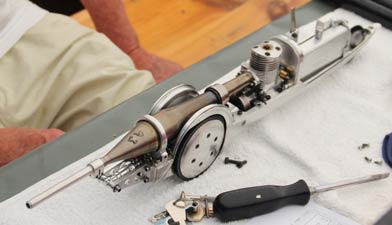 |
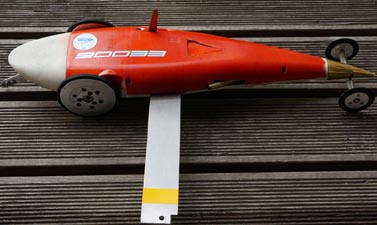 |
| Class 2: Torbjorn Johannessen's record holder | Class 3b: Mart Sepp's 3.5cc record holder |
 |
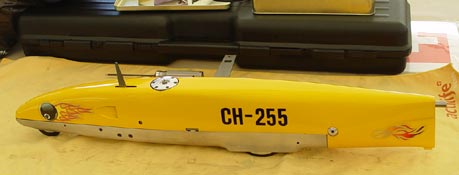 |
| Class 4: Oliver Monk's Picco/Profi | Class 5: Gilbert Huguenin's 10cc Picco car |
©copyrightOTW2025